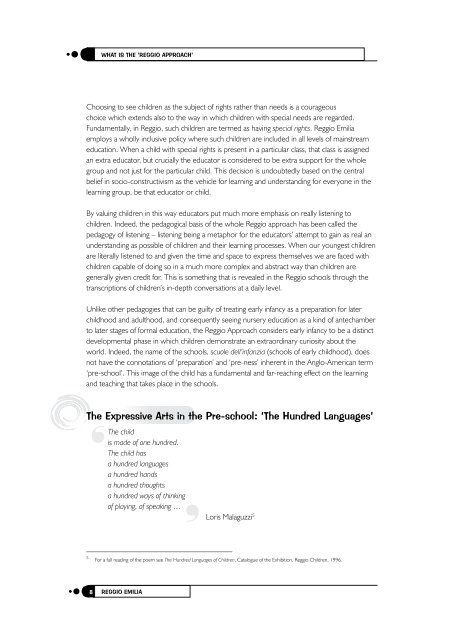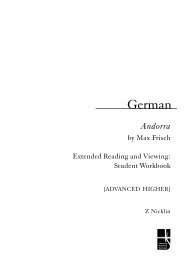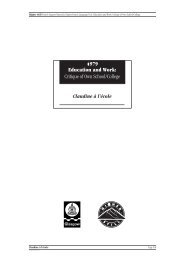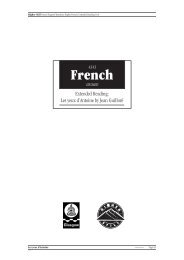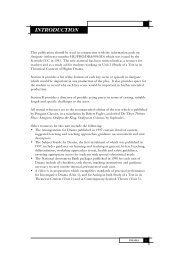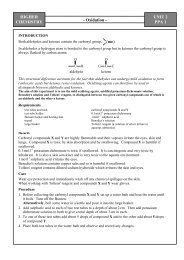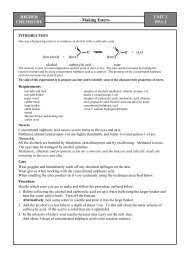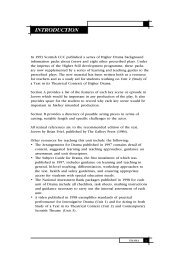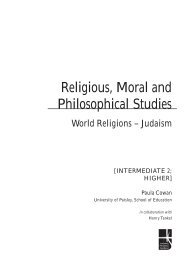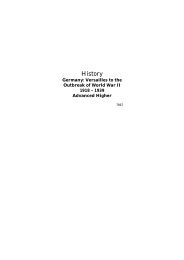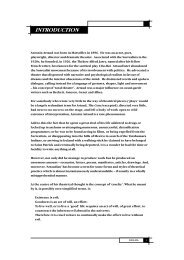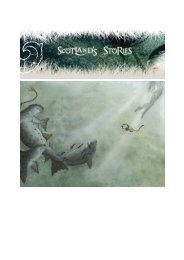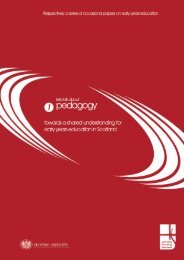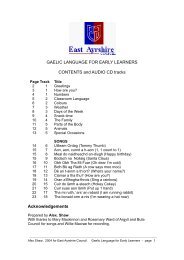The Reggio Emilia Approach to Early Years - Education Scotland
The Reggio Emilia Approach to Early Years - Education Scotland
The Reggio Emilia Approach to Early Years - Education Scotland
You also want an ePaper? Increase the reach of your titles
YUMPU automatically turns print PDFs into web optimized ePapers that Google loves.
Choosing <strong>to</strong> see children as the subject of rights rather than needs is a courageous<br />
choice which extends also <strong>to</strong> the way in which children with special needs are regarded.<br />
Fundamentally, in <strong>Reggio</strong>, such children are termed as having special rights. <strong>Reggio</strong> <strong>Emilia</strong><br />
employs a wholly inclusive policy where such children are included in all levels of mainstream<br />
education. When a child with special rights is present in a particular class, that class is assigned<br />
an extra educa<strong>to</strong>r, but crucially the educa<strong>to</strong>r is considered <strong>to</strong> be extra support for the whole<br />
group and not just for the particular child. This decision is undoubtedly based on the central<br />
belief in socio-constructivism as the vehicle for learning and understanding for everyone in the<br />
learning group, be that educa<strong>to</strong>r or child.<br />
By valuing children in this way educa<strong>to</strong>rs put much more emphasis on really listening <strong>to</strong><br />
children. Indeed, the pedagogical basis of the whole <strong>Reggio</strong> approach has been called the<br />
pedagogy of listening – listening being a metaphor for the educa<strong>to</strong>rs’ attempt <strong>to</strong> gain as real an<br />
understanding as possible of children and their learning processes. When our youngest children<br />
are literally listened <strong>to</strong> and given the time and space <strong>to</strong> express themselves we are faced with<br />
children capable of doing so in a much more complex and abstract way than children are<br />
generally given credit for. This is something that is revealed in the <strong>Reggio</strong> schools through the<br />
transcriptions of children’s in-depth conversations at a daily level.<br />
Unlike other pedagogies that can be guilty of treating early infancy as a preparation for later<br />
childhood and adulthood, and consequently seeing nursery education as a kind of antechamber<br />
<strong>to</strong> later stages of formal education, the <strong>Reggio</strong> <strong>Approach</strong> considers early infancy <strong>to</strong> be a distinct<br />
developmental phase in which children demonstrate an extraordinary curiosity about the<br />
world. Indeed, the name of the schools, scuole dell’infanzia (schools of early childhood), does<br />
not have the connotations of ‘preparation’ and ‘pre-ness’ inherent in the Anglo-American term<br />
‘pre-school’. This image of the child has a fundamental and far-reaching effect on the learning<br />
and teaching that takes place in the schools.<br />
<strong>The</strong> Expressive Arts in the Pre-school: ‘<strong>The</strong> Hundred Languages’<br />
�<br />
WHAT IS THE ‘REGGIO APPROACH’<br />
<strong>The</strong> child<br />
is made of one hundred.<br />
<strong>The</strong> child has<br />
a hundred languages<br />
a hundred hands<br />
a hundred thoughts<br />
a hundred ways of thinking<br />
of playing, of speaking …<br />
�<br />
Loris Malaguzzi 5<br />
5 For a full reading of the poem see <strong>The</strong> Hundred Languages of Children, Catalogue of the Exhibition, <strong>Reggio</strong> Children, 1996.<br />
REGGIO EMILIA


